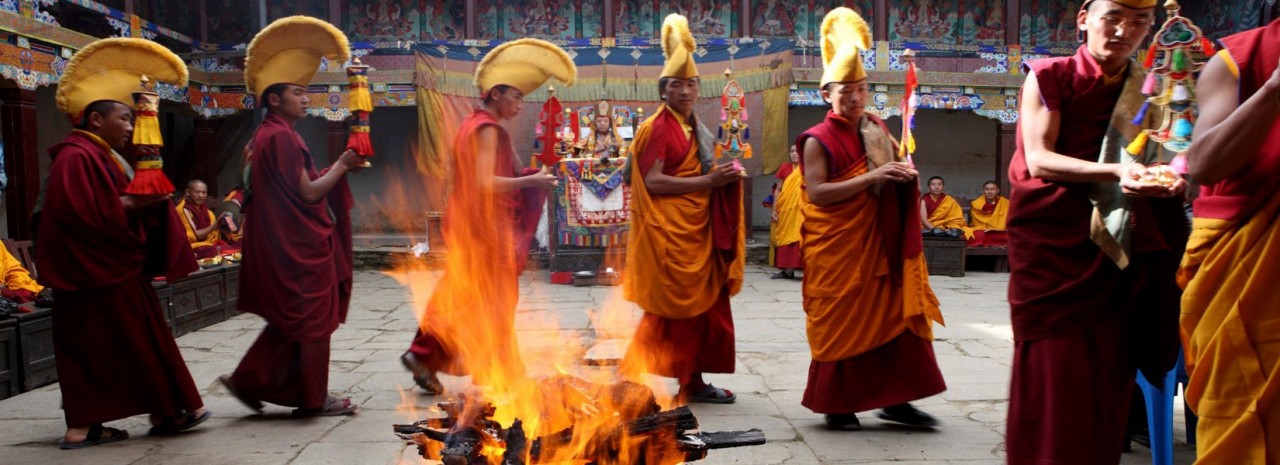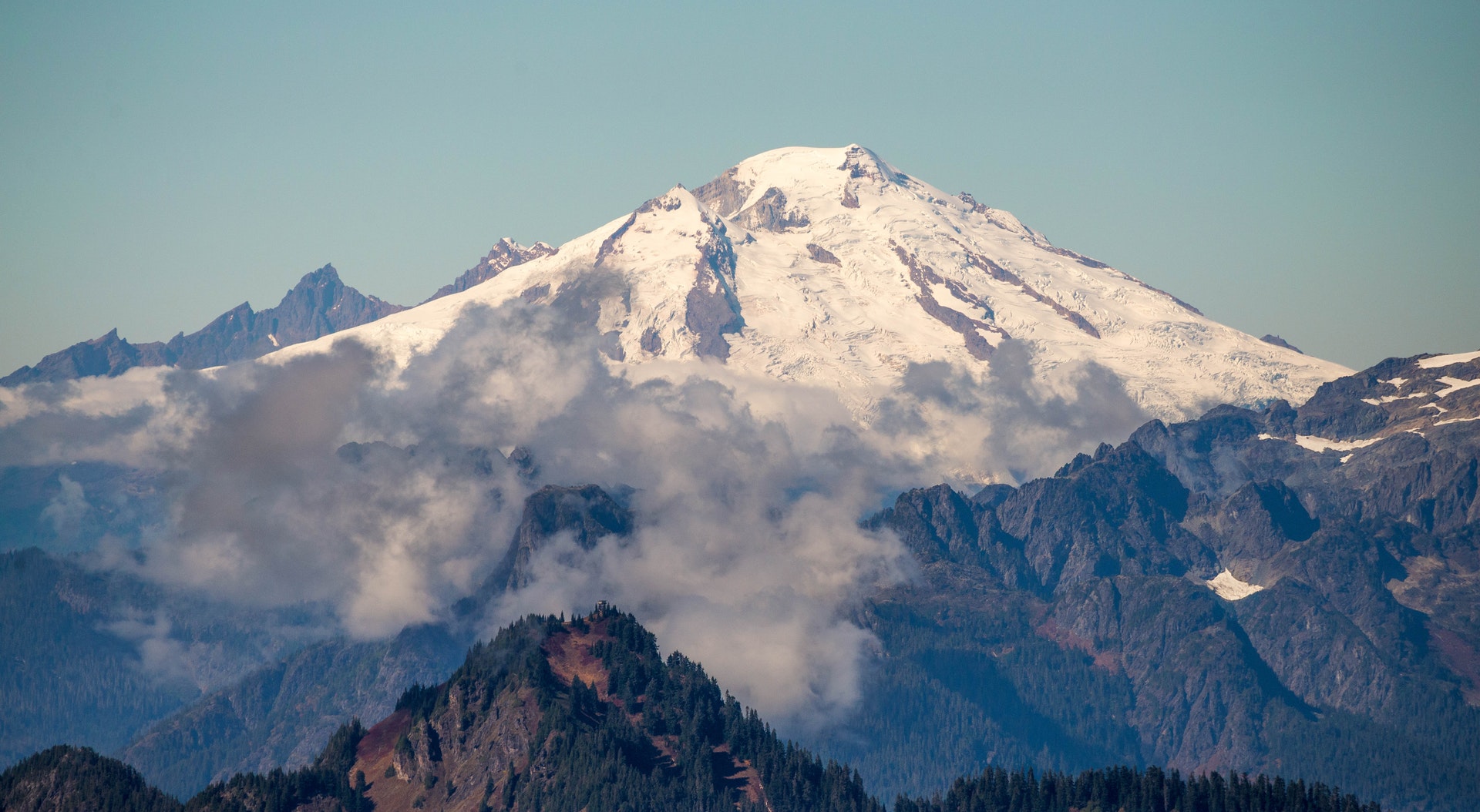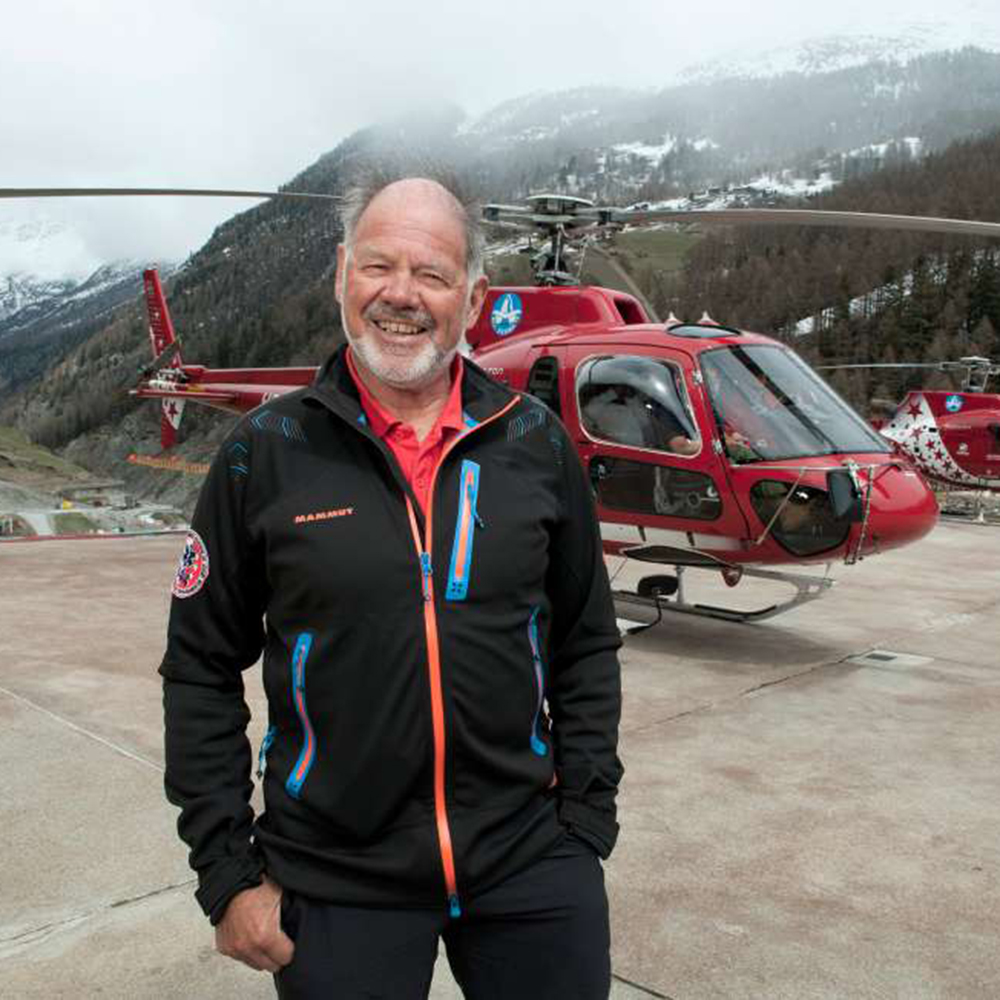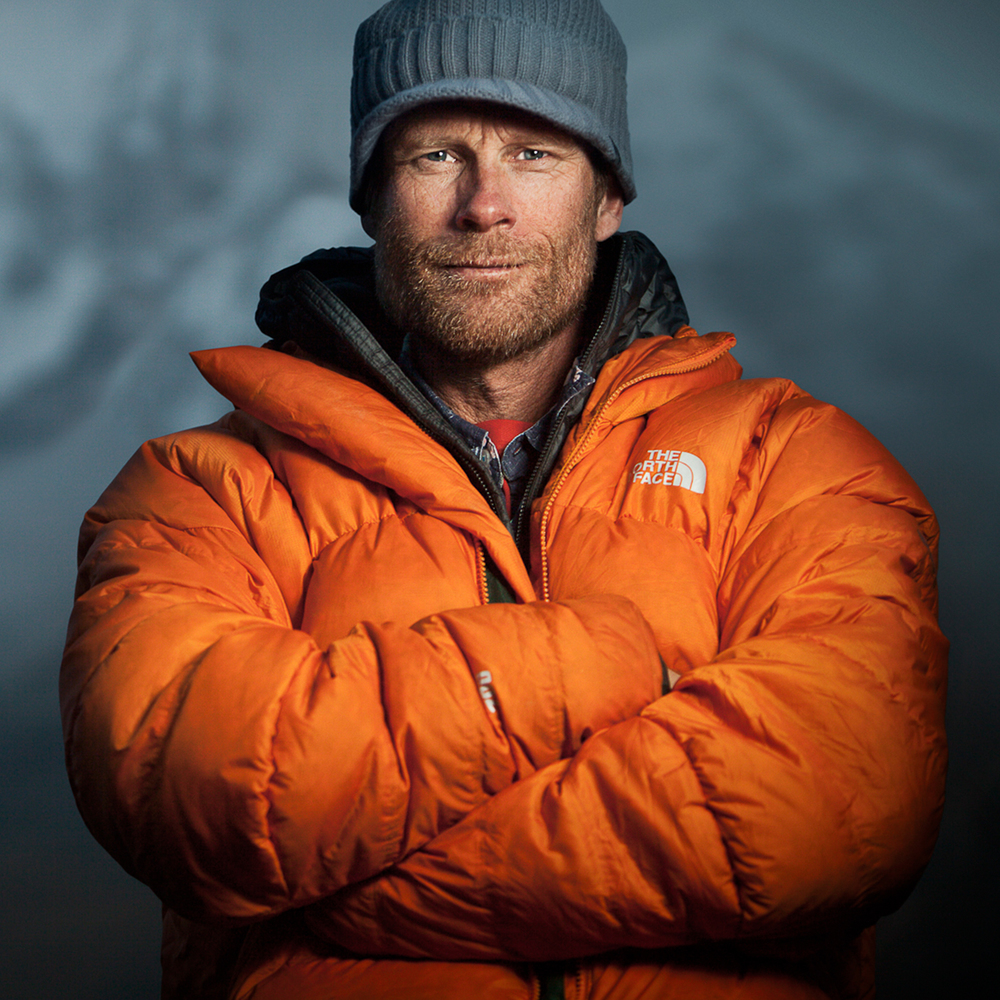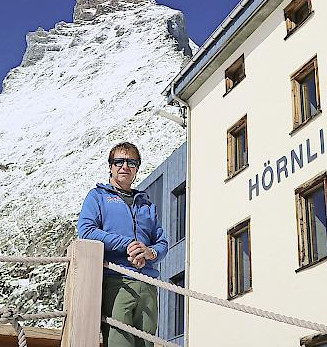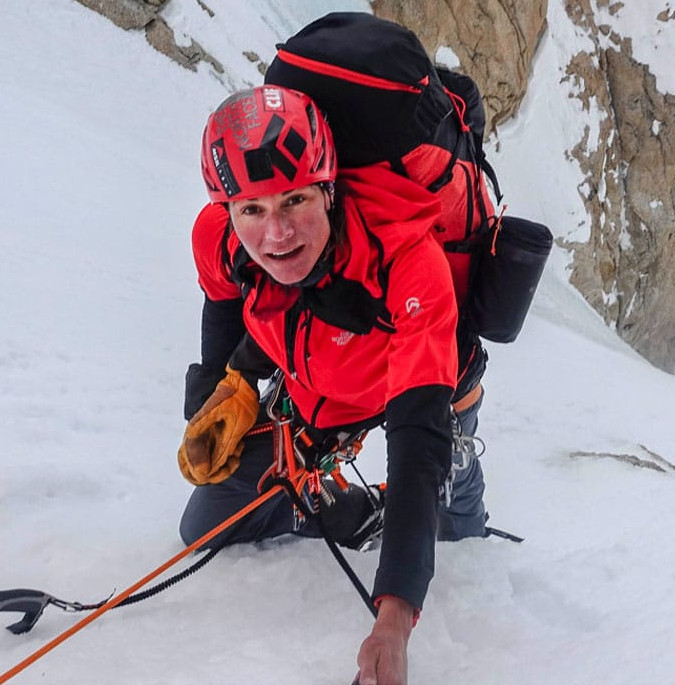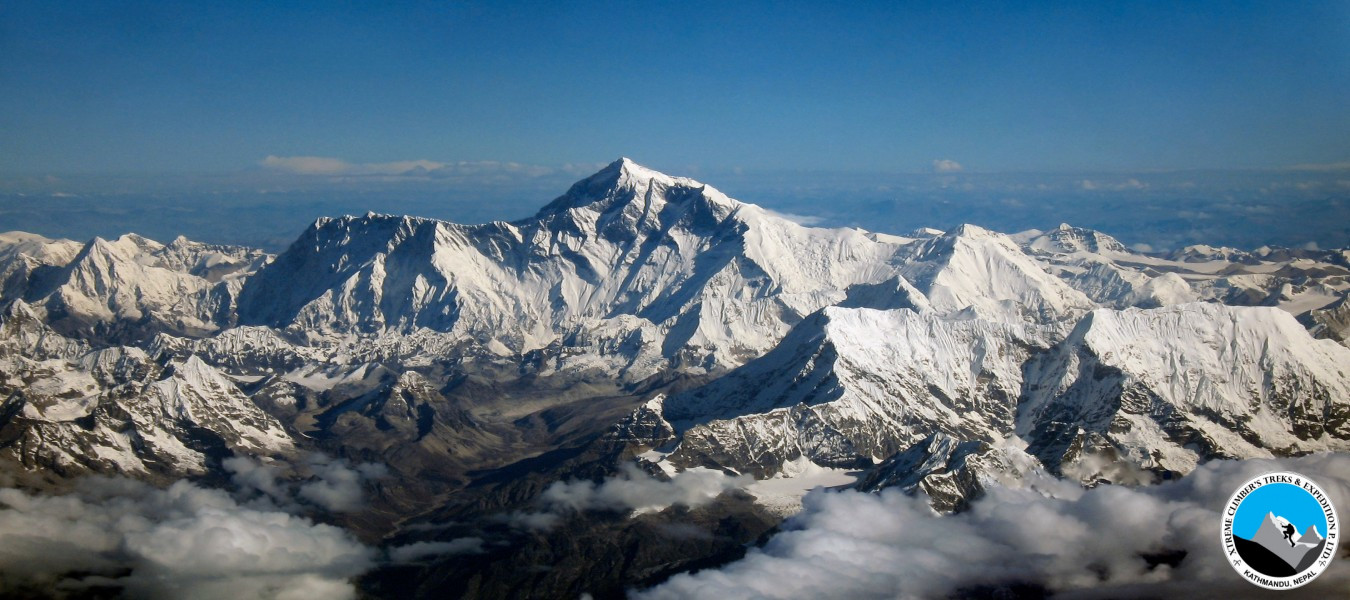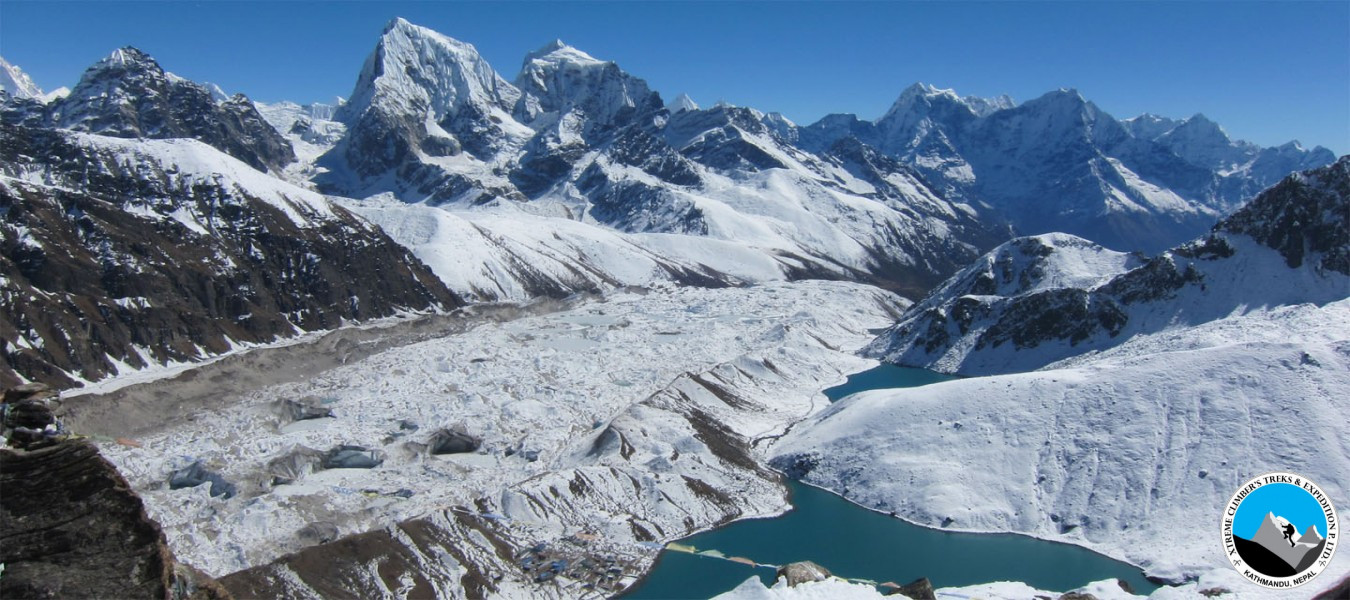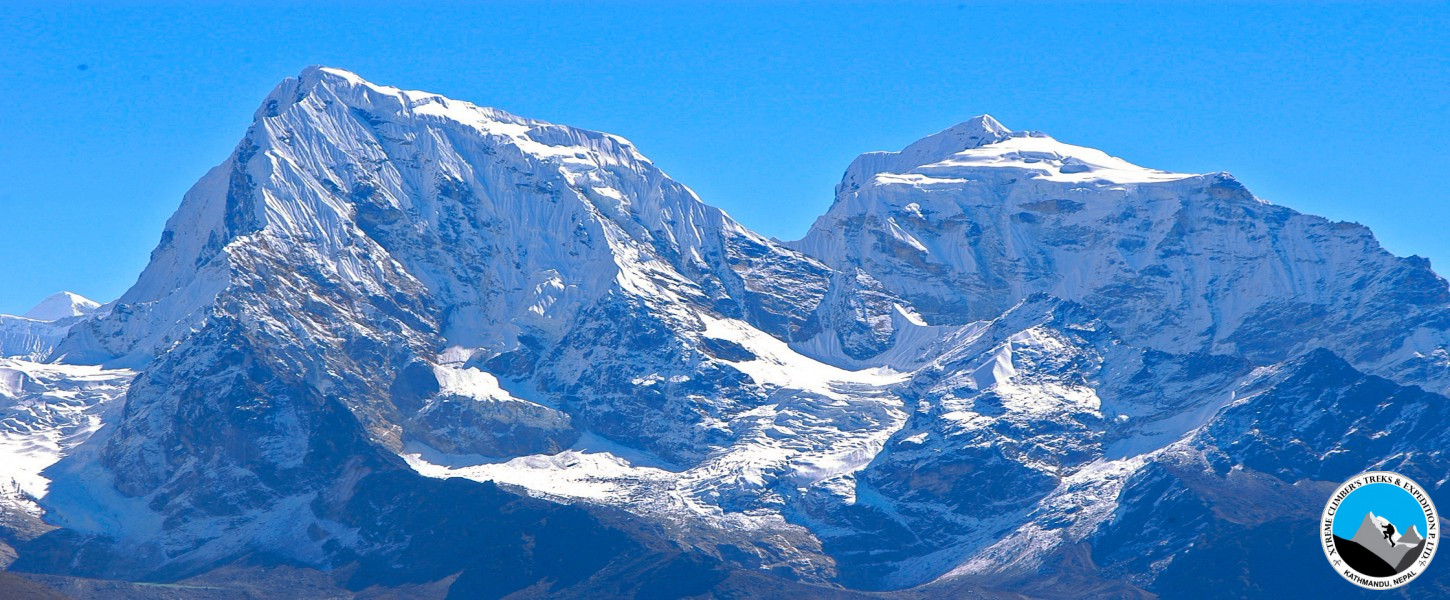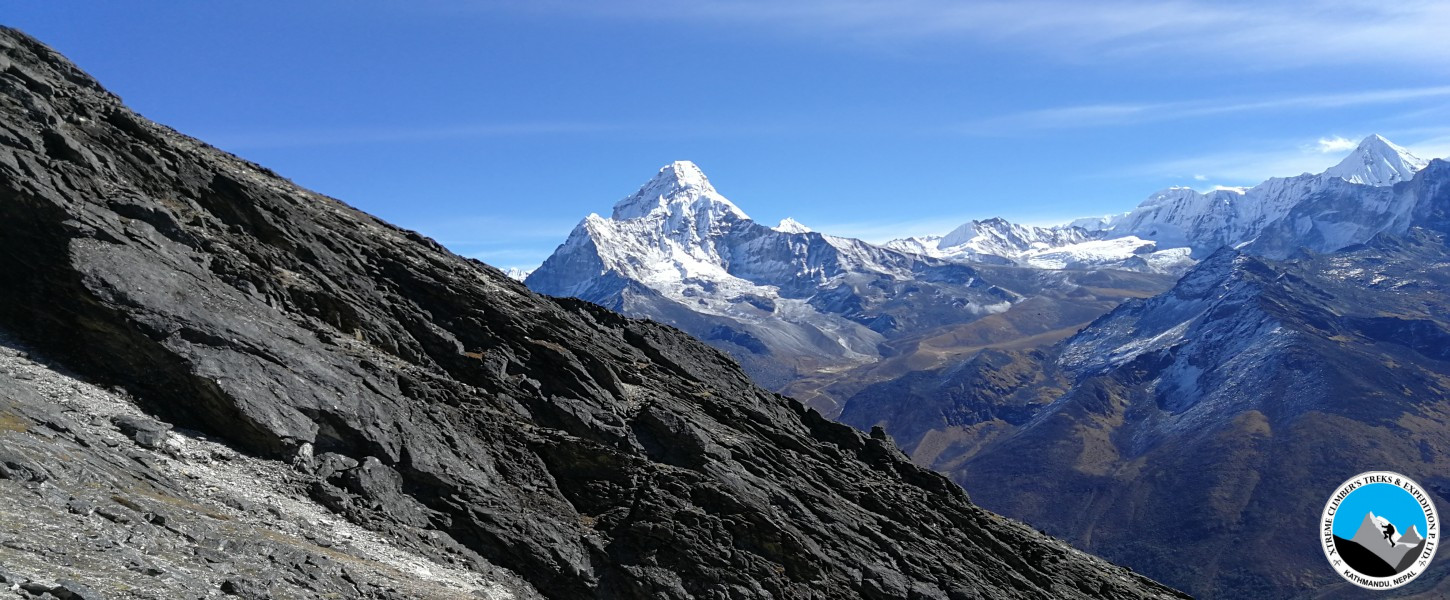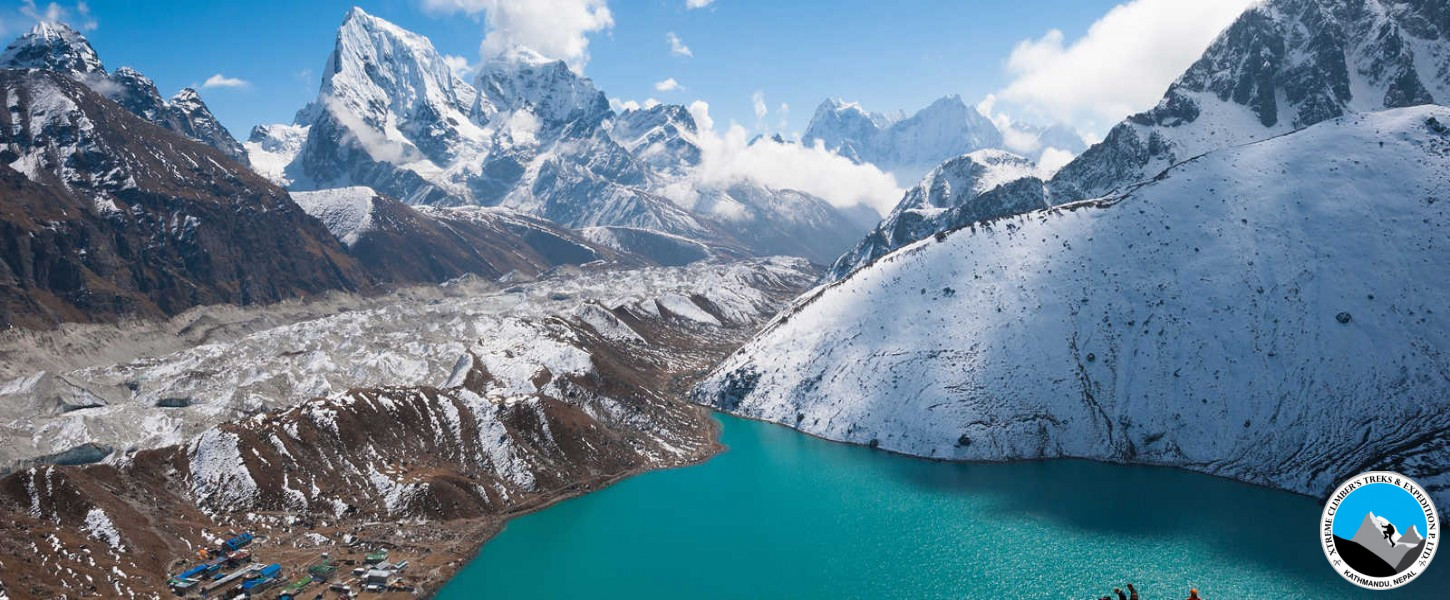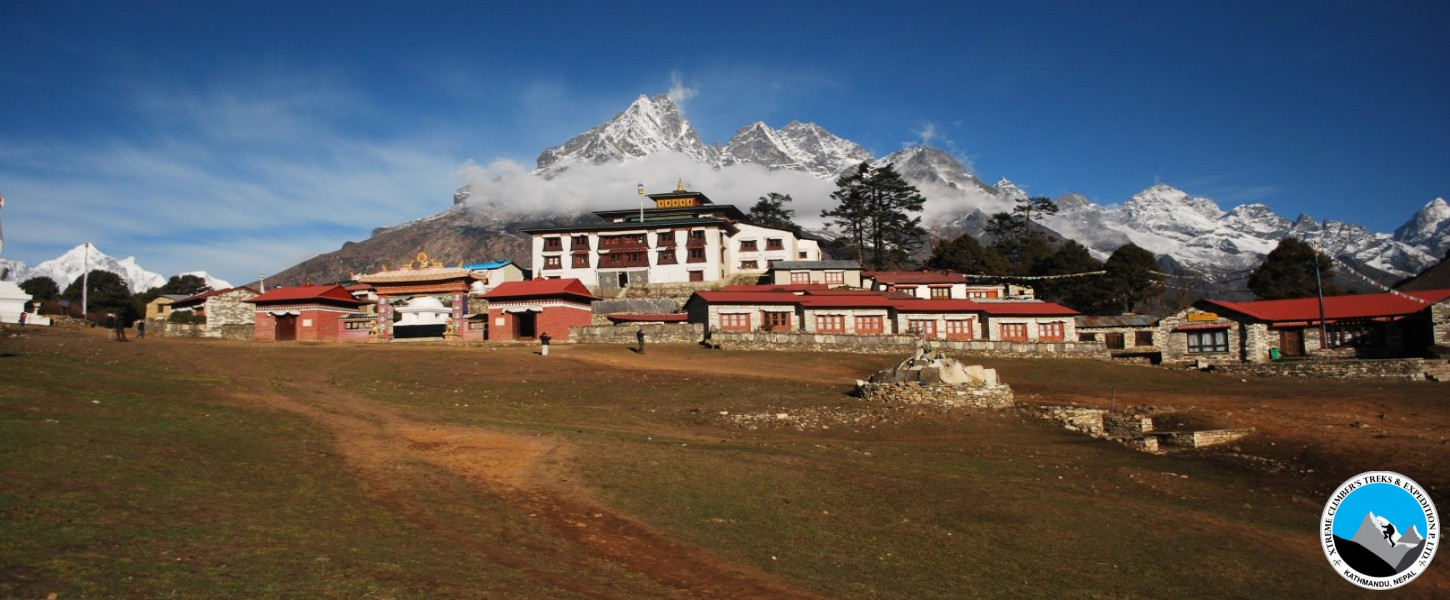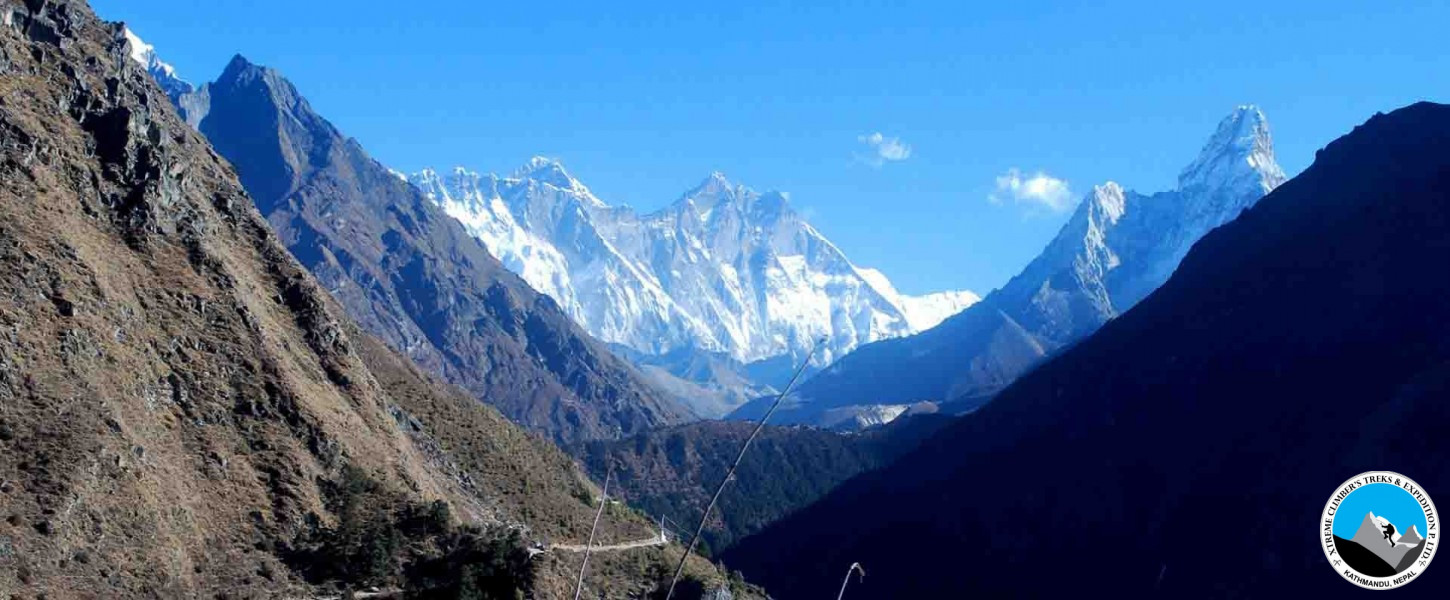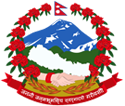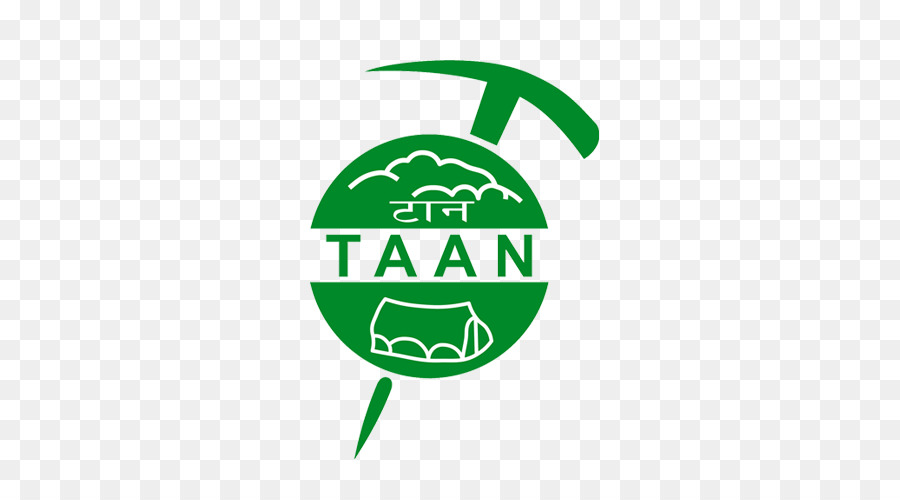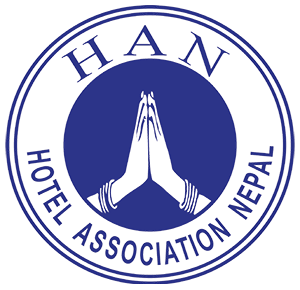Mani rimdu festival also known as chasing of Demons by Spiritual power during 3 days Celebration. Mani Rimdu festival trek one of the most popular Religious and Spiritual festivals of Sherpa people (known as chasing of Demons by Spiritual power during 3 days Celebration). Mani rimdu festival is celebrated only two Oldest Nyingma sect Buddhist monasteries in Everest region- one at Chiwang Monastery in Lower part of Everest and one at Tengboche Monastery, upper part of Everest. The mani rimdu festival dates for 2019 is Set for November 12- 14, 2019. those belongs to the Nying-Mapa Sect of Tibetan Buddhist is Guru Rinpoche (Padmasambhava) is the Spiritual leader. Which is said to be self an outgrowth of the Mahayana Tradition. Join our fixed departure date for most precious buddhist festival trek in khumbu region of everest region.
Very popular from last 2 decades since this Tengboche monastery is located at 3,860m, on the way to Popular Everest Base Camp Trek. Mani rimdu festival is falls on the full moon day of every year in November but date can be changed according to Tibetan calendar. The three-day celebrations of Mani Rimdu follow the Ten-day non-stop prayer sessions addressed to the patron deities - seeking “Blessing for the good of all Mankind". The protagonists of all are Guru Rinpoche, the founder of Vajrayana Buddhism in Tibet. Masked Lamas of Khumbu region perform various religious rituals amidst dancing and singing. Mani Rimdu festival Everest Base Camp Trek is a particular trek that trekkers can Enjoy and learn more from the festival.
Panoramic Everest view trekking with Mani Rimdu festival 12 days is designed for entire adventurous trekkers those who want to sight perfect giant view of Mount Everest with many other high peaks along experiencing Mani Rimdu, the popular festival of Everest region on the same expedition.
Leaving Kathmandu towards Lukla. Triggering our trek forward crossing rhododendron forest, suspension bridge and walking through Dudh Koshi River, and entering through Sagarmatha National Park to sight different rare flora and fauna. further ahead enjoying tea shops, viewing monasteries and passing junction point of Dudh Koshi and Bhote Koshi River, we step Namche Bazaar. Following our trails, we move forward exploring perfect stunning views of Mt. Everest 8,848m, Lhotse (8,516 m/24,940 ft), Nuptse (7,855m/25,772 ft, Makalu (8,463m/27758ft), Pumori (7,161m/23488ft), Tharmarsarku (6,623m/21723ft), Mt. Amadablam. By the time we reach Tengboche we will observe Mani Rimdu festival from close on Tengboche Monastery before steeping downhill. Following the trial leaving Tengboche, we descend back to Lukla and catch a flight to Kathmandu to end our Mani Rimdu festival.
Mani Ramdu is divided into six Preparations:
Construction of the Sand Mandala: Sand mandala is constructed step by step. Colored sand is used to build complicated and symbolic design. Sand mandala takes many days to complete. Defensive blade symbolizing deities are placed around the Mandala. The bowl of Mani Rilwu pills (spiritual medicine) is placed above the center. The Mandala symbolizes the palace of Garwang Thoze Chenpo (Lord of the Dance). Creation of the Buddha of Kindness, the main idol of Mani Rimdu. The mantra "OM AH HUNG RHI, OM MANI PADME HUMG” is repeated thousands of times by the monks during the weeks of ceremony before the public festival. During meditation, they imagine kindness flowing in the form of the mantra, into the Mandala and the Mani Rilwu pills. Kindness then releases out from the Mandala, blessing all those who attend the Mani Rimdu festival.
Wong (The Empowerment): The Wong is the opening day of public ceremony. It's performed on the full moon day, of the Tenth month in the Tibetan lunar calendar. The sacred Mani Rilwu (sacred or blessed pills) and Tshereel (pills for long life), are given to everyone attending.
Chham (The dance): The dances take place on the 2nd day of Mani Rimdu.Symbolic demons are conquered, chase away, or transformed to Protectors of Dharma. As the theme of the dance positive forces fight with those of disorder through the dances. The dances convey Buddhist teaching on many levels from the simplest to the most philosophical. During the dance the monks are believed to become divine beings. The dances are only performed during Mani Rimdu because they are considered to be very Sacred, and not for ordinary entertainment.
Ser-Kyem: Ser-Kyem is most commonly used to make tea offerings to Dharma guards such as Mahakala. It has two pieces: a larger raised dish-shaped bowl and a smaller raised offering bowl. The smaller is placed in an upright position in the larger dish when the offering is being made. When not in use, the smaller offering bowl is placed upside down in the larger bowl. The food offerings can also be placed in the larger dish when in use.This offering of spiritual nectar is made in many ceremonies. The six dancers represent Ngag-pa, Tantric magicians.They make offerings of alcohol from silver vessels, and small tormas, to the Lama, Yidam, Khandro, and Shi-Dak (the Earth deities). A Buddhist consultant takes ‘refuge’ in the Lama (spiritual guide), Yidam (personal deity) and Khandro (wisdom dakini). A central theme in Tibetan Buddhist practice is to make offerings to these beings, so that they will help with the virtuous actions which lead to Buddhahood.
The Fire Puja (Jinsak): The Fire Puja is performed in the yard the day after the dances. The Fire Puja is an offering to Agni (the god of fire), and to the Gods of the mandala - to allay all harm in the world. The harm is visualized as dissolving into the grain and butter is burned.Afterwards, the sand mandala in the temple is pulled to pieces, and the sand is given as an offering to the serpent gods (Nagas).
Chhingpa: The next dance portrays the Four Protecting Ghings, defending the Buddhist faith against attack by demons. Shining paper masks hide the faces of the dancers, each a different color and each displaying a constant smile. The dancers´ hops are rhythmically accompanied by the beating of cymbals.The dancers charge at children in the audience and scare them as for fun.
The Dakini dance is performed genially. Slow motion dance steps, keeping perfect time with the soft tinkle and slow beat of bells and drums is performed by five young priests. The dancers are without masks, and portray female spiritual figures; the partners of Padmasambhava. It is believed that they come from his pure land of Shangdok Palri where they live within his mandala. The herald the imminent arrival of Guru Rinpochhe at the Mani Rimdu.Two of the Ghing are male, and carry cymbals, while the two females carry drums. The males represent skillful means and the female represent wisdom; these two aspects of the path The torma is made from barley flour and decorated with colored butter. It begins by symbolizing the body of the deity, and by the end of the ceremony, symbolizes enlightenment itself. It stands in the front of the mandala on its own shrine, at the very heart of the temple
